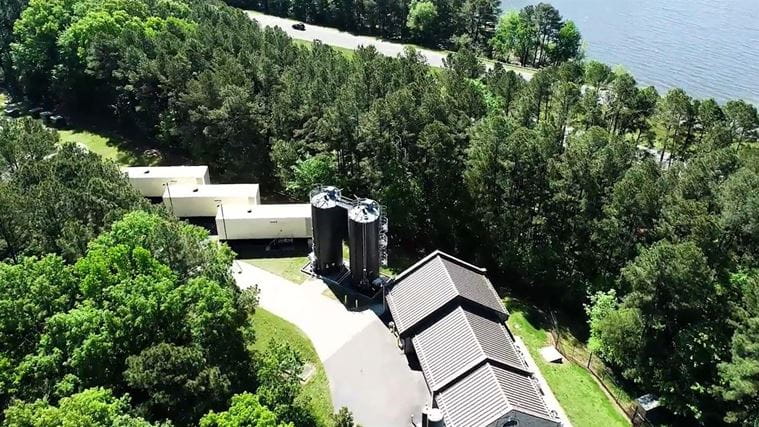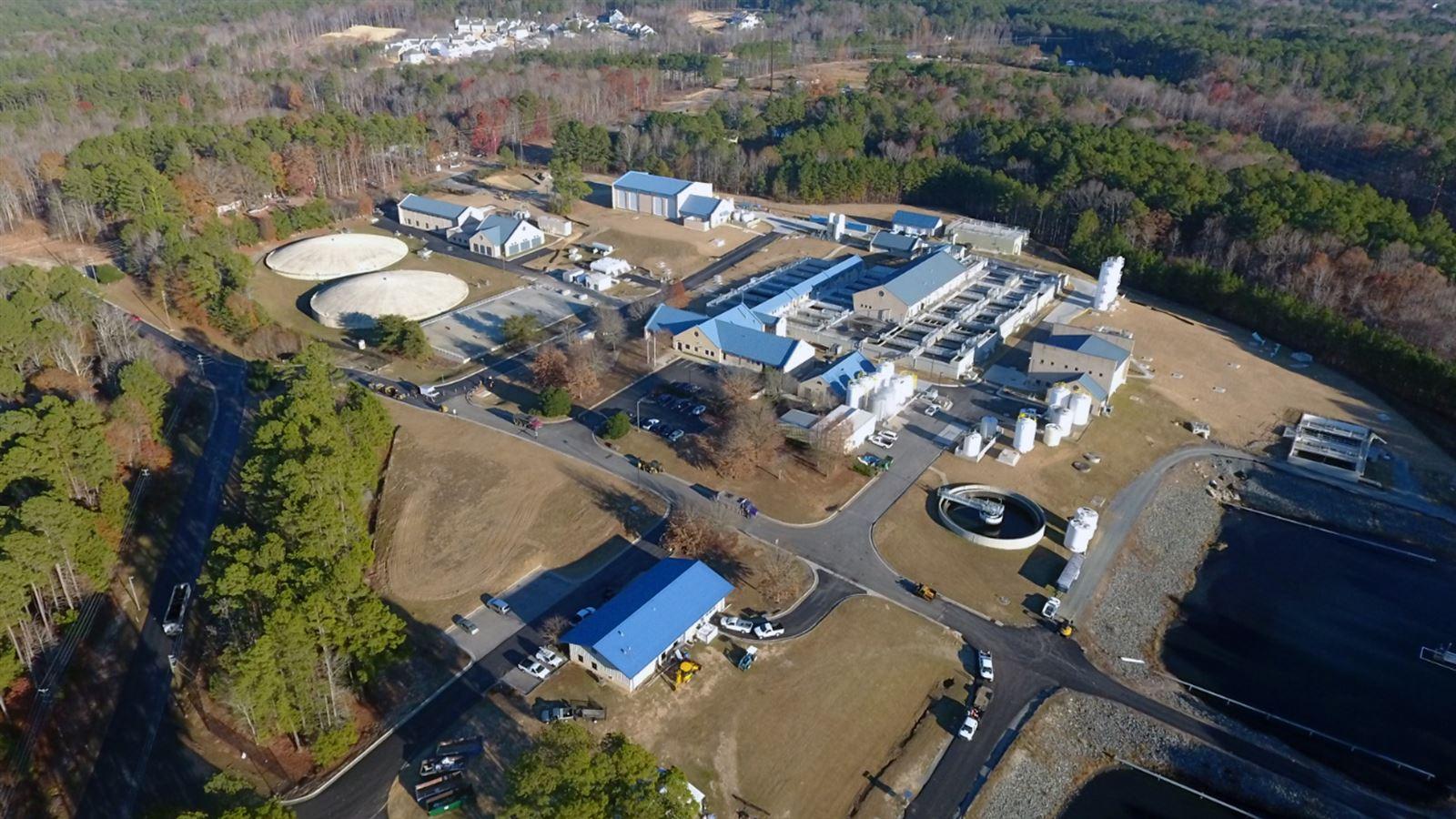How Water Utilities are Approaching PFAS Compliance
EPA published the final National Primary Drinking Water Regulation (NPDWR) for six PFAS (PFOS, PFOA, PFNA, PFBS, PFHxS, and GenX) on April 25, 2024. The clock is now ticking for drinking water utilities to comply with these regulations. In many cases, that means implementing significant treatment overhauls to address PFAS concentrations in their water supplies.
The Association of Metropolitan Water Agencies (AMWA), in partnership with CDM Smith, hosted a webinar soon after the release of the PFAS drinking water limits to address questions about compliance. Here are some key takeaways shared by the panel and stories from some utilities that are tackling the PFAS challenge, including Fairfax Water (VA), the town of Cary, NC, and OCWD (CA).
Sampling
According to the new rule, all utilities will need to do some initial PFAS monitoring, which entails quarterly sampling in most cases. Utilities have three years to get the initial PFAS monitoring completed and to initiate compliance sampling and consumer confidence reports (CCRs). Then, they have an additional two years to achieve compliance.
Jamie Bain Hedges, general manager at Fairfax Water, and her colleagues are responsible for efficient operation and stewardship of the utility’s $2 billion in infrastructure. Hedges and her team had no reason to be concerned about PFAS until the Virginia General Assembly tasked the Department of Health with conducting a limited PFAS occurrence study in the Commonwealth’s drinking water in 2021.
Because it is the largest utility in the state, it was selected to participate in a limited PFAS occurrence study. The results of the study, as well as regular voluntary monitoring results from Fairfax Water, showed concentrations of PFAS hovering above 4.0 parts per trillion (ppt) in one of their reservoirs.
Since concentrations are still relatively low, there is a possibility that Fairfax Water could avoid significant treatment overhauls. To do that, the utility would have to identify and eliminate the most significant sources of the contamination.
PFAS source identification is critical.

To comply with new regulations, all utilities need to do some initial PFAS monitoring.

Source Id
Because the utility’s water sources are multi-jurisdictional, PFAS source identification is critical for Fairfax Water. To that end, the utility has been collaborating with stakeholders and regulators to advance their knowledge of PFAS sources.
On the other side of the country, in Orange County, CA, water suppliers have seen PFAS infiltrate source waters via treated wastewater.
Gina Ayala is the director of Public Affairs for the Orange County Water District (OCWD). OCWD depends on various sources of water to maintain the groundwater basin at adequate levels. OCWD manages groundwater supplies for 2.5 million people across the region, and reports that nearly half of its drinking water wells have been impacted by PFAS.
Traditionally, OCWD has traced contaminants to the local chemical manufacturers. In the case of their PFAS levels, however, the utility discovered that compounds were arriving via upstream wastewater treatment plants that discharge into the Santa Ana River.
Since early draft regulations were first proposed, practitioners from the drinking water and wastewater industries have argued for exemptions that would shift the burden of responsibility to the sources of contamination. So far, no exemptions have been issued. In Virginia, for instance, Fairfax Water has been working with the State Drinking Water Association to sponsor a bill in the General Assembly that would require monitoring for suspected PFAS discharges that make their way to drinking water sources.

Treatment
When Fairfax Water realized it had measurable PFAS in 2021, the utility began a desktop review of treatment alternatives and costs. Even with such relatively low PFAS concentrations, it was an eye-opening experience for Fairfax Water and its stakeholders.
OCWD has been confronted with similar estimates. The Southern California utility estimates the cost of design and construction of necessary treatment upgrades and the associated operation and maintenance will be about $1.8 billion. That number is expected to increase over the subsequent years.
Cary, NC, a suburb of Raleigh, may be smaller in size than Fairfax and Orange Counties, but it has been just as proactive in addressing PFAS. The local water utility, owned and operated by the town, has been implementing strategies to manage PFAS for nearly a decade. In 2018, upon learning about the PFAS-fighting efficacy of powder-activated carbon (PAC), the town began applying it to source waters at Jordan Lake.
The following year, Cary worked with CDM Smith to evaluate life cycle cost options for other available technologies, including: granular activated carbon (GAC), ion exchange, and reverse osmosis (RO). The study found that GAC and PAC were both effective but required substantial ongoing media replacement costs. RO demonstrated solid performance and would be helpful for an even wider range of emerging contaminants, but it created a new waste stream that was also challenging to treat.
Following their testing, Cary’s utility team met with the State Regulatory Staff to discuss the issue and to coordinate regionally on the best path forward in being transparent with their citizens.

Outreach
Another key compliance activity is that the results of PFAS compliance sampling must listed in CCRs.
In 2017, years before PFAS regulations and before the town of Cary, NC had a chance to investigate PFAS at lower levels, a local scientist, unaffiliated with the town, conducted an independent study at her home. The scientist detected PFAS in trace amounts, which subsequently led to media reports. As a result, the town quickly began its own testing and built a data set to learn more about PFAS at lower thresholds.
OCWD came to a similar realization, understanding that it would need a dedicated communications campaign to properly translate the complex and rapidly developing science around PFAS to its millions of stakeholders. Early on, they met with the Orange County Register, a local news outlet, and told them the story of their PFAS levels and their plans to address any potential contamination with state regulators.
Not every utility has been willing to invite in the press to discuss potential PFAS exposures, but that is exactly what OCWD did. In the end, it established a relationship early on, and that allowed them to tell their story. That relationship has continued to this day. OCWD also launched a robust communications campaign across numerous fronts. Their audience included everyone from the public to OCWD employees, retailers, and elected officials.
Back in Cary, NC, the local government has launched its own PFAS outreach program, testing and posting data online. They are now testing for 40 PFAS compounds each quarter. They share their results with the regulatory community and the public. To date, Cary has been in compliance with current regulations each year since they started comprehensive monitoring, testing, and treatment in 2018.







